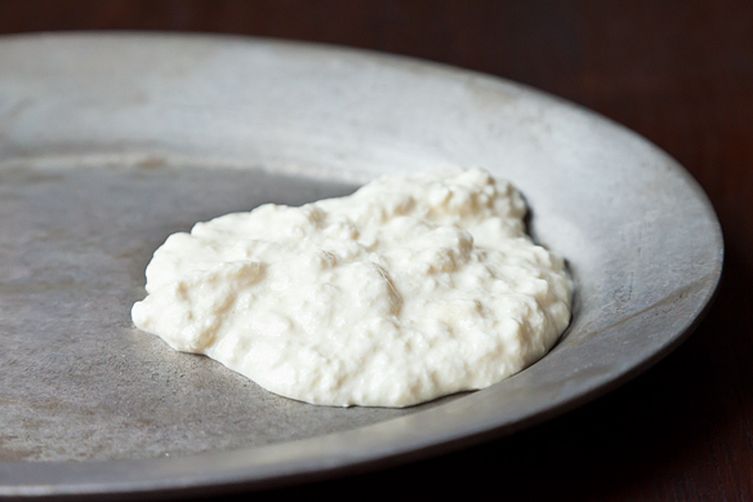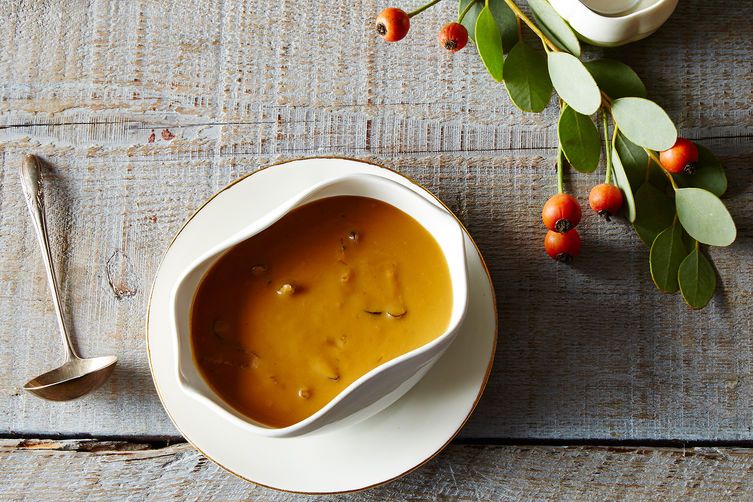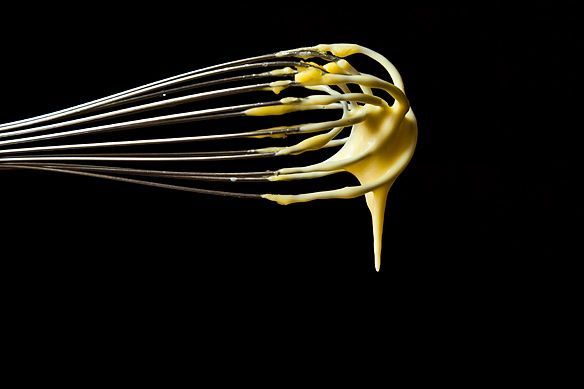The holidays are a saucy time. And I'm not talking about what happens when boozy eggnog and mistletoe are in close proximity. Where would your Thanksgiving turkey be without its sidekick, gravy? What would macaroni and cheese be without a stellar béchamel?
Truly though, every time of year is a good time for sauce. I am a big believer in the idea that sauce makes everything better. I prefer my eggs Benedict swimming in hollandaise; I will ask for extra salsa on the side. Sauces can cover most woes (dry meat, underseasoned vegetables). They make every dish more savory, more exciting. Isn't the best part of any meal swiping a crust of bread over your plate to pick up the last of a truly great sauce?
However, like many of our favorite things (pie dough, yeasted things), some sauces can be intimidating to tackle at home. They come with some inherent risk. What if your alfredo breaks, and instead of a velvety, cheesy sauce you have a watery, curdle-filled mess? What if your gravy starts to separate? Apologies if you had never feared these outcomes before I brought them up; but it can't hurt to be prepared.
In order to beat these sauce problems, you must first understand them.
Why do sauces curdle?
Dairy has three main components: fat, proteins, and water. Curdling occurs when the proteins in a sauce denature and bind together, separating from the water and tightening up into curds.

Dairy or egg-y sauces can curdle for several reasons:
- There might not be enough fat in the sauce; skim milk will curdle much more easily than other, fattier dairy products.
- High heat can also cause sauces to curdle; low and slow is the safest option. You should never let a dairy-based sauce boil. If you’re making a sauce bound with egg yolks, such as hollandaise, you might want to make it over a double boiler for extra safety.
- Dairy sauces will curdle with the addition of acid. You have probably used this to your advantage before: It’s how we have delicious things like ricotta and paneer. However, it’s not what you want in your yogurt or cream sauce, so be sure anything acidic (like wine) is fully reduced before adding your dairy.
- Add the dairy or egg yolks to your sauce gradually, and add them last. If you’re especially anxious, you can temper the milk by whisking a bit of the hot ingredients into the dairy, then slowly whisking that mixture back into the pan.
- Salt can sometimes cause curdling, so wait to season your sauce until the very last second.
- If you’re feeling extra paranoid about the danger of curdling, consider adding a starchy thickening agent to your sauce. You can dissolve some cornstarch in water or make a roux, then proceed on with the recipe from there.
Fun fact: According to Atomic Kitchen, camel’s milk will not curdle! So there's always that option.

So...can I fix a curdled sauce?
Once a sauce has curdled, it can be very difficult to return proteins to their original state. And while it’s perfectly safe to eat sauces that have curdled, it’s not especially appetizing. Here are a few strategies to combat curdling:
- If a dairy-based sauce curdles, immediately halt the cooking process. Take your pan off the heat and place it in an ice bath. Atomic Kitchen recommends adding an ice cube or two to your sauce to ensure it cools on the double.
- If the clumps are relatively few, you can pour the whole sauce through a sieve. Whisk the strained sauce vigorously to break up any tiny remaining lumps.
- Proteins are more likely to bond with each other when there are a lot of similar molecules in a small space, so one way to discourage their fraternization is to introduce some different molecules, such as starch or fat. Think of these as chaperones at a middle school dance, making sure there’s plenty of room between the whippersnappers. So make a roux and slowly whisk in the curdled sauce, or heat a hefty splash of full-fat milk or cream in a saucepan and add it to the pan.

Why do sauces break?
Sauces will break (the butter or oil separates from the sauce) for many of the same reasons that they curdle. Maybe you...
- Added the fat too quickly, so the emulsifying agent (egg yolks or mustard, for example) got overwhelmed and couldn’t keep linking the fat molecules to the liquid molecules.
- Heated the sauce too much too quickly. This will also overwhelm the emulsifier; and, if you’re using eggs, scramble them.
- Kept the sauce warming too long, or, even worse, refrigerated it.
And can I fix a broken one?
You know your sauce is about to break when you see little fat droplets forming around the edge. If this happens, halt: Add a tablespoon or so of liquid and whisk vigorously until the sauce tightens back up. Then you can resume gradually adding your fat.
If your sauce has broken completely, there is still hope.
-
The Kitchn recommends whisking an egg yolk with a bit of whatever liquid you are using as the sauce’s base. Gradually add your broken liquid to the egg yolk mixture, one tablespoon at a time. In doing this, you’re forming a fresh emulsion.
- You could also add a tablespoon or so of heavy cream. Its high fat content should help stabilize the sauce.
- If your sauce is broken because it sat out too long at room temperature or you refrigerated it, don’t fret—this one's a pretty easy fix. Pour your sauce into a blender and add a tablespoon of very hot water, then blend until it’s smooth and creamy.
- If your aioli breaks, you can use that broken mixture as the base of a brand new, unbroken aioli.
If none of these strategies work, there’s nothing to do but start over. Pour yourself a glass of wine, then pat yourself on the back: You just had a learning experience! Curdled sauces? Broken dreams? Never again.
Do you have any tips for fixing sauces that have curdled or broken? Or any memorable stories involving a sauce slip-up? Tell us in the comments!






See what other Food52 readers are saying.